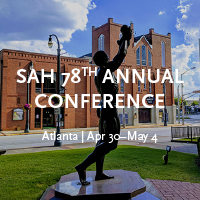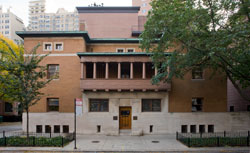-
Membership
Membership
Anyone with an interest in the history of the built environment is welcome to join the Society of Architectural Historians -
Conferences
Conferences
SAH Annual International Conferences bring members together for scholarly exchange and networking -
Publications
Publications
Through print and digital publications, SAH documents the history of the built environment and disseminates scholarshipLatest Issue:
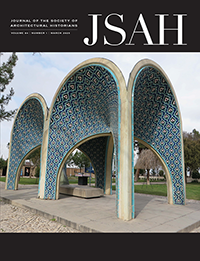
-
Programs
Programs
SAH promotes meaningful engagement with the history of the built environment through its programsMember Programs
-
Jobs & Opportunities
Jobs & Opportunities
SAH provides resources, fellowships, and grants to help further your career and professional life -
Support
Support
We invite you to support the educational mission of SAH by making a gift, becoming a member, or volunteering -
About
About
SAH promotes the study, interpretation, and conservation of the built environment worldwide for the benefit of all
Maputo, Mozambique
Jan 16, 2025
by
Lisandra Franco de Mendonça, 2024 Edilia and François-Auguste de Montêquin Senior Scholar
Lisandra Franco de Mendonça is a licensed architect and heritage conservation researcher based in Berlin. She was educated at Porto University and at Sapienza University of Rome. She received her double PhD from Coimbra University/Sapienza University of Rome (Architecture and Urbanism, and History and Restoration of Architecture) in 2016 and 2020, with a dissertation on the conservation of modern architecture and urban ambience in Maputo (Mozambique).
In 2017, findings from her research on Mozambique and Dar-es-Salaam, Tanzania were included within a series of reports on culture and sustainable urban development for UNESCO.
With support from the 2024 Edilia and François-Auguste de Montêquin Senior Scholar Fellowship, she is undertaking field and archival research for a period of two months related to Portuguese colonial architecture from the 20th century. All photographs are by the author, except where otherwise specified. Author's grammar conventions have been preserved.
_____________________________________________________________________________________
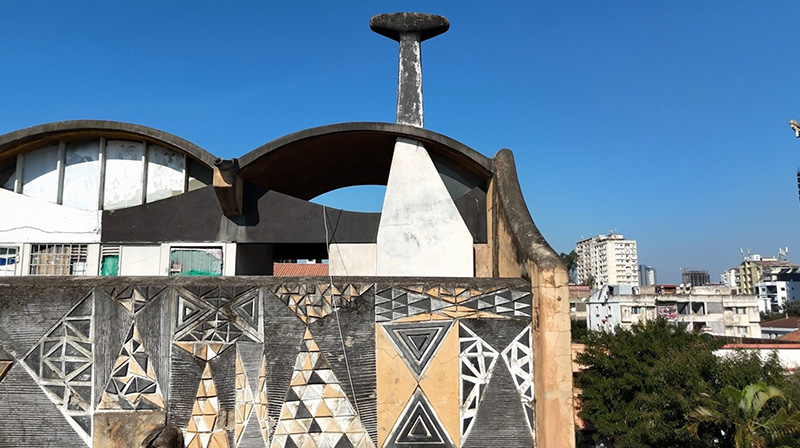
The Smiling Lion Building. Photo taken with a drone during the workshop at FAPF-EMU by the students.
Maputo, Mozambique1
In recent decades, research on architecture and urbanism in former African colonies has increased, with a particular focus on the repertoires of British, French, Italian, and, more recently, German influence. One area that remains under-researched, in comparative terms, is former Portuguese Africa. In the specific case of Mozambique, a growing body of research has made it possible to scrutinise various aspects pertinent to the history of architecture and urban planning in Maputo, especially regarding the dichotomy between cidade (city) and subúrbios (suburbs).2 The city or “city of cement,” corresponding to a legally delimited urban area designed for the settler population during the colonial period, was effectively the primary focus of subsequent urbanisation plans, underscoring the role of the colonial administration relative to informal processes of urban expansion, and leading to the consolidation of a dual planning regime during the second half of the 20th century. Furthermore, research has examined the impact of Portugal’s late (de)colonisation, for instance, on the radicalisation of the Mozambique Liberation Front (Frelimo), and its aftermath, specifically in relation to the independence project of the newly independent African nation, including topics such as race relations, urban planning, culture, and education.3 Recent studies have also begun to explore the substantial investment in infrastructure (e.g., road networks, agricultural settlements, forced villagisation) carried out during the Colonial/Liberation War (1964-1974). Both modernisation, reflected in the upgrading of urban and territorial infrastructures to favour demographic colonization,4 and forced villagisation, a strategy of war employed by the Portuguese government and army to destroy rural bases of African rebellion against the colonial regime,5 were features, but not peculiarities, of the Portuguese colonial project. Forced villagisation (aldeamentos) borrowed strategies from the French use of camps de regroupment in Algeria and “the British use of concentration camps both in the colonization of Boer lands in South Africa at the beginning of the twentieth century and in the suppression of the Mau Mau in Kenya at midcentury.”6 Soon after Mozambique’s independence on June 25, 1975, forced villagisation was re-enacted with the socialist turn, now with a focus on rural poverty, proffering agriculture as the basis for development and aiming to reorganise and modernise the countryside.7
The construction of the “New Man”,8 as envisioned by Frelimo, also drew “on many pre-existing social currents from the colonial period.”9 This entailed, for instance, an “assimilationist” logic,10 compounded by a “militarist”11 and “puritanical” approach,12 which objectified Africans as backward, hapless victims of underdevelopment who needed to be elevated to higher levels of material and moral well-being.
My contributions to this field, stemming from recent research, regard the history of Portuguese heritage policies in colonial Mozambique, the history of construction and its means of production in Mozambique between the late 19th and early 20th centuries, public space visual redress during Mozambique’s independence, and post-colonial heritage practices in Mozambique, such as efforts to decolonise the Maputo Fortress and redress resistance movements.
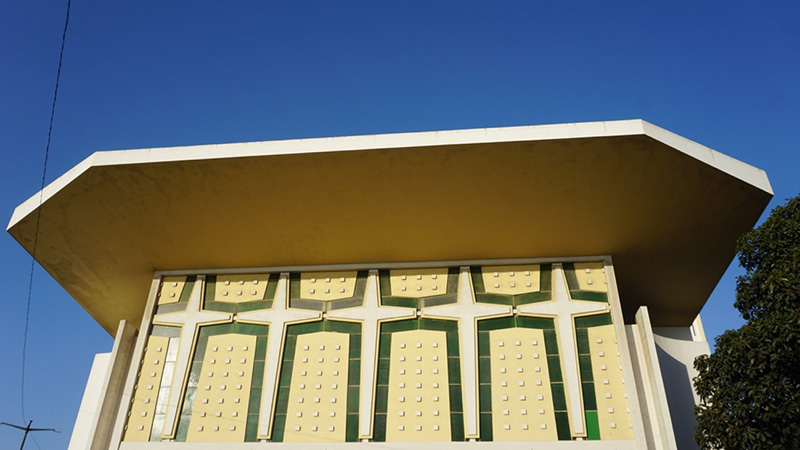
Church of Nossa Senhora das Vitórias, Av. Mao Tse Tung. Phot. R. Mendonça.
2024 Edilia and François-Auguste de Montêquin Senior Scholar Fellowship
This fellowship contributed to fieldwork in the context of my ongoing research project entitled Architecture of Decolonisation, which focuses on modern colonial architecture in Maputo. The innovative character of this project is reflected in its research question: what is the impact, in the evaluation of built heritage and on conservation (theory), of formal, social, economic and aesthetic reconfigurations of modern/post-colonial settings? Considering the lack of recognition of non-Western modernist sites around the world and the underrepresentation of modern African heritage in the UNESCO's World Heritage List? The modern heritage produced by Portuguese/Mozambican late (de)colonisation represents a single thread to elaborate this type of evaluation. My analysis questions the architectures and urban spaces of Maputo as the embodiment of colonial and post-colonial (mis)constructions, in order to unveil their present material condition and how that eludes the recognition of how African urban history and modern heritage matter.
The research undertaken as part of this fellowship will contribute to a book project tentatively titled Architecture of Decolonisation, Post-colonial Urbanity and After: The Epistemological Shift in Modern Architecture Culture and Conservation Approach, which examines (colonial) architecture in Maputo. As part of this work, I travelled from Berlin to Lisbon—where some collections/archives from the former Portuguese colonies have been relocated—and from Lisbon to Maputo. In Maputo, I undertook extensive field and archival research over approximately six weeks. I consulted and obtained copies of a wide range of visual records produced between the 1940s and 1970s at the Arquivo Histórico de Moçambique and the Centro de Documentação e Formação Fotográfica. These materials detail the evolution of the city and its buildings, neighbourhoods, events, and memorials, as well as some aspects of the visual redress of the public space in the context of independence. My archival research was complemented by long city walks, visits to museums, theatres, and churches, along with photographic surveys of various fragments of the urban landscape and of a neighbourhood on the outskirts of the “city of cement” built for assimilated public administration workers—the Munhuana or Indigenous Neighborhood—which is currently in harsh conditions.13
I am extremely grateful to the Faculty of Architecture and Physical Planning (FAPP) at Eduardo Mondlane University (EMU) for hosting me as a Visiting Scholar. During my research stay, I organised a four-day workshop at FAPP–EMU, titled “Year Zero, Elements for a History of Independence Seen through Architecture.” The workshop involved 23 undergraduate architecture students and focused on studying five modernist buildings in the city of Maputo. The students responded to a pre-defined questionnaire and conducted a preliminary survey of the buildings’ state of conservation. The goal was to assess the feasibility of the pre-defined method for studying these buildings and to engage the students and residents with the topic, based on a methodology that draws on the knowledge of the community. This was particularly relevant given that the history of local colonial architecture is given little emphasis in the curricula of these students. The experience yielded excellent results. Students presented panels that included architectural surveys, interviews with residents, and both close-up and contextual views of the buildings captured using a drone. The workshop's five study groups were supported by four professors, including myself and a scholar from the School of Architecture at the University of Minho, Prof. Elisiário Miranda, who has extensive experience in architectural fieldwork in Mozambique. I am also deeply indebted to several scholars at EMU for their kind support—especially Prof. Mohamed Arif, Prof. Luís Lage, Prof. Catarina Torres, and Dr. Alda Costa—, as well as to Prof. Carlos Trindade, Chair of FAPF, and Prof. Roberto João, Deputy Director for Undergraduate Studies, for providing access to facilities and issuing credentials that allowed us to carry out architectural surveys. I also benefitted greatly from the generosity and kindness of the staff at the Arquivo Histórico de Moçambique, which allowed me to further explore records pertaining to the Câmara Municipal de Lourenço Marques and periodicals from the 1970s (Notícias, A Tribuna, Tempo). This work, in addition to previous visits to this and other archives, has significantly advanced the materials I am using for my book project and enabled the completion of the research project mentioned above. Moreover, they informed some considerations on the built environment of Lourenço Marques (present-day Maputo) in a chapter titled “'The Sick City—Various Recipes to Cure the Reed Belt and the Vowel Manual Without a Master’:14 Urban Design, Architecture and the Struggle for the City in a Portuguese Colony,” forthcoming in a monograph on Pancho Guedes, published by Fundação Serra Henriques. This research has also formed the basis for a research proposal aiming to expand expertise in construction technologies, architecture, urbanism, and the modes of production within the colonial building culture of former Portuguese Africa, as well as the residues of this colonial-built heritage.
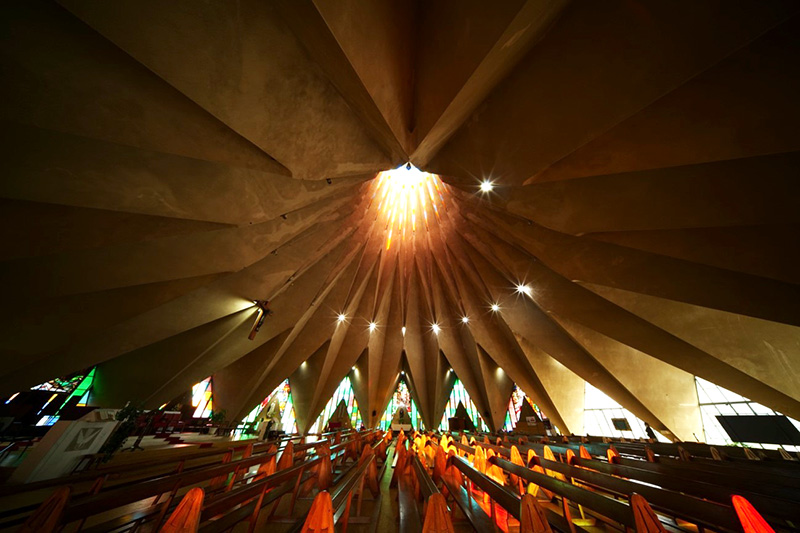
Church of Santo António da Polana, Av. Kwame Nkrumah. Phot. R. Mendonça.
_________________________________________
[1] The generous support of the 2024 Edilia and François-Auguste de Montêquin Senior Scholar Fellowship offered by the Society of Architectural Historians has enabled me to undertake extensive archival research and fieldwork in Maputo in July–August 2024. In addition, financial support awarded by the Project Lab2PT – Landscapes, Heritage and Territory laboratory (UID/04509/2020), through Fundação para a Ciência e a Tecnologia (FCT) has allowed me to undertake fieldwork at other locations and buildings sites in Mozambique.
[2] See, for instance, J.S. Morais, Maputo, Património da Estrutura e Forma Urbana (Lisbon: Livros Horizonte, 2001); C.N. Silva, ed. Urban Planning in Lusophone African Countries (Farnham, UK: Ashgate, 2015); L. Franco de Mendonça, Conservação da Arquitetura e do Ambiente Urbano Modernos: A Baixa de Maputo (Lisbon: Fundação Serra Henriques, 2024, in press), “Construction Works, Xibalo and the Maxaquene Cove Embankment in Lourenço Marques, in Portuguese East Africa,” Construction Matters Proceedings of the 8th International Congress on Construction History, eds. S. Holzer, S. Langenberg, C. Knobling and O. Kasap,1261-8 (Zurich: vdf Hochschulverlag AG, 2024), https://8icch.ethz.ch/proceedings.html.
[3] A. Dinerman, Revolution, Counter-Revolution and Revisionism in Postcolonial Africa: The Case of Mozambique, 1975-1994 (Abingdon: Routledge, 2006); P. Jenkins, Urbanization, Urbanism, and Urbanity in an African City: Home Spaces and House Cultures (New York: Palgrave Macmillan, 2013); D. Morton, Age of Concrete. Housing and the Shape of Aspiration in the Capital City of Mozambique (Athens: Ohio University Press, 2019).
[4] M. Newitt, História de Moçambique, trans. L. Rodrigues and M.G. Segurado (Nem Martins: Edições Europa-América, 2012), original English text published in 1995; J. Feijó, Do Passado Colonial à Independência, 2nd. ed. (Maputo: Alcance Editores, 2010), 86-7.
[5] J.P.B. Coelho, “Da Violência Colonial Ordenada à Ordem Pós-colonial Violenta: Sobre um Legado das Guerras Coloniais nas Ex-colónias Portuguesas,” Lusotopie (2003): 175–93, here 179-80.
[6] H. le Roux, “Architectures of Discrimination and Desctruction: Lucia Allais, Designs of Destruction: The Making of Monuments in the Twentieth Century. Chicago: University of Chicago Press, 2018. 347 pp.; 8 color plates, 123 b/w ills. $45; Samia Henni, Architecture of Counterrevolution: The French Army in Northern Algeria. Zurich: gta Verlag, 2017. 336 pp.; 73 b/w ills. $ 59 paper,” Art Journal 79, no. 1 (Spring 2020): 114-16, here 115, https://doi.org/10.1080/00043249.2020.1724038; for the French Algerian context, see S. Henni, Architecture of Counterrevolution: The French Army in Northern Algeria (Zurich: gta Verlag, 2017).
[7] J.P.B. Coelho, “Abrir a Fábula: Questões da Política do Passado em Moçambique,” Revista Crítica de Ciências Sociais106 (2015): 153–66, here 158, https://doi.org/10.4000/rccs.5926; B. Machava, “Re-education Camps and the Messianic Ethos of Mozambique’s Socialism,” Socialismes en Afrique, ed. F. Blum, H. Kiriakou, M. Mourre, M. Basto, P. Guidi, C. Pauthier, O. Rillon, A. Roy and E. Vezzadini, 319–56 (Éditions de la Maison des sciences de l’homme, 2021), https://doi.org/10.4000/books.editionsmsh.51435.
[8] S. Vieira, “O homem novo é um processo,” Tempo, no. 398 (May 21, 1978), 27-38.
[9] J. Sumich, and J. Honwana “Strong Party, Weak State? Frelimo and State Survival Through the Mozambican Civil War: An Analytical Narrative on State-making,” Crisis States Working Papers - Series Two 23 (December 2007): 1-28, here 8.
[10] Sumich and Honwana “Strong Party, Weak State?” 8. The Portuguese administration advocated for the assimilation of Africans into Portuguese civilisation. However, access to the category of assimilado (assimilated) was conditioned by numerous, almost unattainable, requirements. By 1961, less than 1% of Africans had acquired that legal status, which conferred civil rights and Portuguese citizenship. Until 1961, the Estatuto do Indigenato (Native Codes) enforced a strict socio-racial hierarchy under three main categories: “citizen”, “assimilated” and “indigenous”.
[11] J.L. Cabaço, Moçambique: Identidades, Colonialismo e Libertação (São Paulo: UNESP, 2009, Kindle), 319-20.
[12] Machava, “Re-education Camps,” paragraph 5.
[13] Built between the late 1930s and the beginning of the 1940s, it is one of the few examples of colonial planned housing for Africans in the city.
[14] Title of a newspaper article by Pancho Guedes (Amâncio de Alpoim Miranda “Pancho” Guedes) (1925-2015), see A.d’A. Guedes, “A Cidade Doente: Várias Receitas para Curar o Mal do Caniço e Manual do Vogal sem Mestre,” A Tribuna (June 9, 1963): 6-7.
